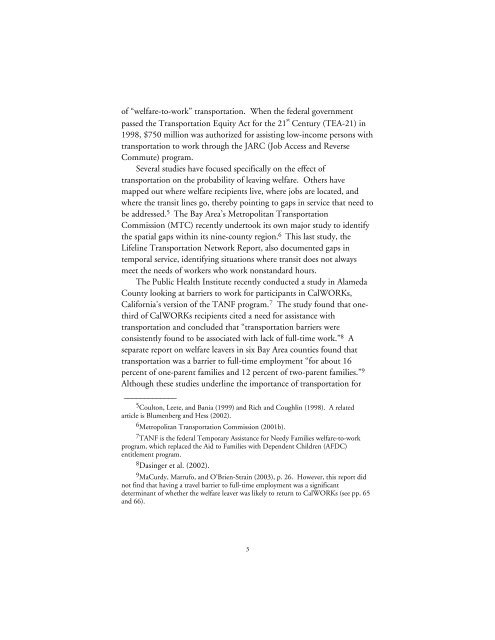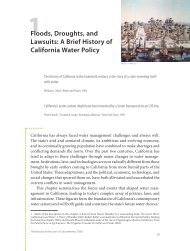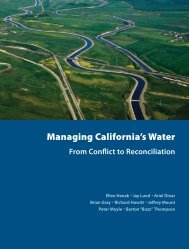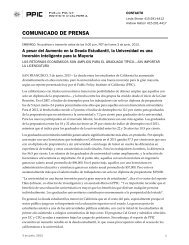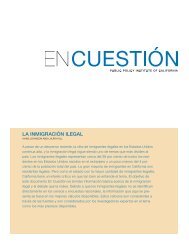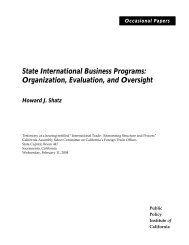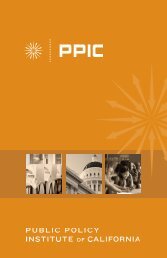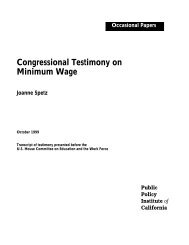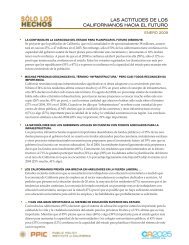Transportation Spending by Low-Income California Households ...
Transportation Spending by Low-Income California Households ...
Transportation Spending by Low-Income California Households ...
You also want an ePaper? Increase the reach of your titles
YUMPU automatically turns print PDFs into web optimized ePapers that Google loves.
of “welfare-to-work” transportation. When the federal government<br />
passed the <strong>Transportation</strong> Equity Act for the 21 st Century (TEA-21) in<br />
1998, $750 million was authorized for assisting low-income persons with<br />
transportation to work through the JARC (Job Access and Reverse<br />
Commute) program.<br />
Several studies have focused specifically on the effect of<br />
transportation on the probability of leaving welfare. Others have<br />
mapped out where welfare recipients live, where jobs are located, and<br />
where the transit lines go, there<strong>by</strong> pointing to gaps in service that need to<br />
be addressed. 5 The Bay Area’s Metropolitan <strong>Transportation</strong><br />
Commission (MTC) recently undertook its own major study to identify<br />
the spatial gaps within its nine-county region. 6 This last study, the<br />
Lifeline <strong>Transportation</strong> Network Report, also documented gaps in<br />
temporal service, identifying situations where transit does not always<br />
meet the needs of workers who work nonstandard hours.<br />
The Public Health Institute recently conducted a study in Alameda<br />
County looking at barriers to work for participants in CalWORKs,<br />
<strong>California</strong>’s version of the TANF program. 7 The study found that onethird<br />
of CalWORKs recipients cited a need for assistance with<br />
transportation and concluded that “transportation barriers were<br />
consistently found to be associated with lack of full-time work.” 8 A<br />
separate report on welfare leavers in six Bay Area counties found that<br />
transportation was a barrier to full-time employment “for about 16<br />
percent of one-parent families and 12 percent of two-parent families.” 9<br />
Although these studies underline the importance of transportation for<br />
_____________<br />
5 Coulton, Leete, and Bania (1999) and Rich and Coughlin (1998). A related<br />
article is Blumenberg and Hess (2002).<br />
6 Metropolitan <strong>Transportation</strong> Commission (2001b).<br />
7 TANF is the federal Temporary Assistance for Needy Families welfare-to-work<br />
program, which replaced the Aid to Families with Dependent Children (AFDC)<br />
entitlement program.<br />
8 Dasinger et al. (2002).<br />
9 MaCurdy, Marrufo, and O’Brien-Strain (2003), p. 26. However, this report did<br />
not find that having a travel barrier to full-time employment was a significant<br />
determinant of whether the welfare leaver was likely to return to CalWORKs (see pp. 65<br />
and 66).<br />
3


